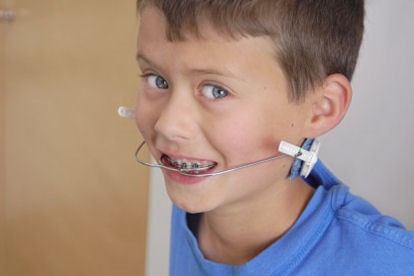
Cochrane Review on distalising upper first molars – does an extraoral appliance work better than an intraoral appliance?
October’s edition of the Cochrane Library saw the publication of one new review and one updated review from the Cochrane Oral Health Group.
Follow the links to read more!
New review: Orthodontic treatment for distalising upper first molars in children and adolescents by Safa Jambi, Badri Thiruvenkatachari, Kevin D O’Brien and Tanya Walsh
Orthodontic treatment is a type of dental care that corrects crooked or sticking out teeth by moving the teeth into different positions. When orthodontic treatment is provided with braces it is sometimes necessary to move the upper molar teeth backwards (distalise). This is achieved by special types of braces (appliances) that are placed either before or at the same time as the normal braces. Appliances which move the upper molar teeth backwards can be placed inside the mouth (intraoral appliance) or attached to the back of the head (extraoral appliance). 10 clinical trials were analysed, to evaluate the best technique. It found that when intraoral appliances are compared to headgear they will probably move the upper molar teeth backwards more than headgear. However, the use of intraoral appliances was also associated with movement of the upper front teeth when compared to extraoral appliances in four studies. This is an unwanted effect that was not observed with the use of the headgear appliances.
Updated review: Antibiotics for the prophylaxis of bacterial endocarditis in dentistry by Anne-Marie Glenny, Richard Oliver, Graham J Roberts, Lee Hooper, Helen V Worthington
This updated review has been produced to determine whether people at increased risk of bacterial endocarditis, a severe infection or inflammation of the lining of the heart chambers, should routinely take antibiotics before invasive dental procedures in order to reduce the incidence of endocarditis, the number of deaths, and the amount of serious illness this group of people experiences. One study was included in this review, which compared the treatment of people at high risk of endocarditis who did develop BE and a group of people at high risk of endocarditis who did not develop BE. No studies were located that assessed numbers of deaths, serious adverse events requiring hospital admission, other adverse events, or cost implications of treatment.
Three editorials were published in the Cochrane Library in October:
- Cochrane and capacity building in low- and middle-income countries: where are we at? by Taryn Young, Paul Garner, Tamara Kredo, Lawrence Mbuagbaw, Prathap Tharyan and Jimmy Volmink
- Should The Cochrane Collaboration be producing reviews of efficiency? by Mike Drummond, Ian Shemilt and Luke Vale, on behalf of the Campbell and Cochrane Economic Methods Group
- The WHO Reproductive Health Library: a Cochrane window on sexual and reproductive health by Metin Gülmezoglu, João Paulo Souza, Jitendra Khanna, Guillermo Carroli, Justus Hofmeyr, Jean-José Wolomby-Molondo, Suneeta Mittal, Pisake Lumbiganon and Linan Cheng
Other highlights of Issue 10, 2013 include:
- Psychosocial interventions for supporting women to stop smoking in pregnancy
- Integrated disease management interventions for patients with chronic obstructive pulmonary disease
- Exercise for depression
- Assisted reproductive technology: an overview of Cochrane Reviews
- Antibiotic prophylaxis for short-term catheter bladder drainage in adults
- Barriers and facilitators to the implementation of lay health worker programmes to improve access to maternal and child health: qualitative evidence synthesis
- Organised inpatient (stroke unit) care for stroke
- Chinese herbal medicine for diabetic peripheral neuropathy
- Combined and alternating paracetamol and ibuprofen therapy for febrile children
- Non-corticosteroid immunosuppressive medications for steroid-sensitive nephrotic syndrome in children
- Prophylactic oxytocin for the third stage of labour to prevent postpartum haemorrhage
